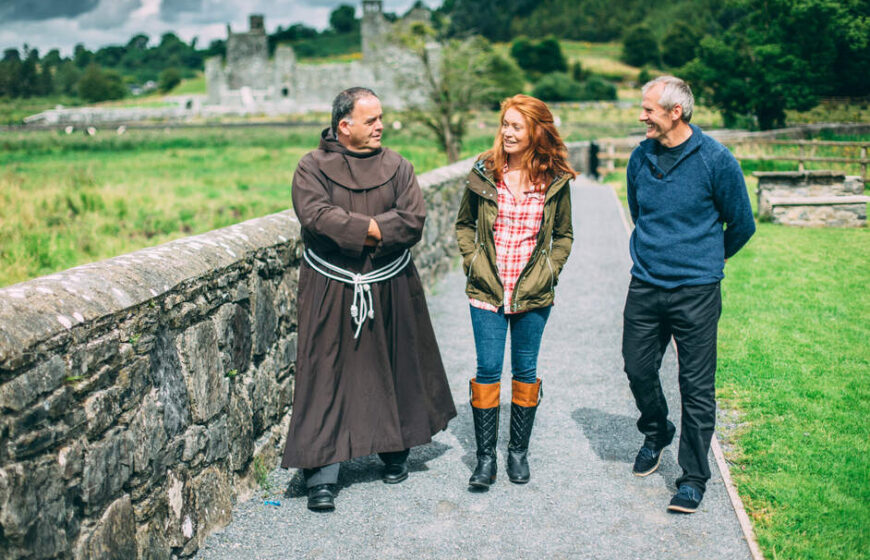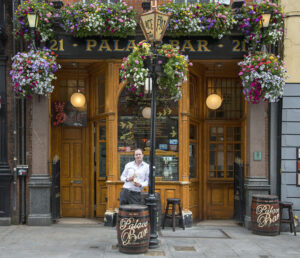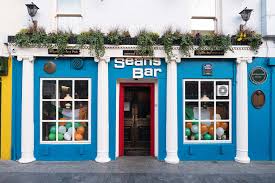In Ireland there is history everywhere. From passage tombs older than the ancient pyramids of Egypt to ancient monuments dating back to 2500 B.C. Our mystical and magical castles are what attracts many visitors to the island of Ireland but did you know about the Abbeys of Ireland?

An abbey is a type of monastery that was used by members of a religious order under the governance of an abbot or abbess. Abbeys provided a complex of buildings and land for religious activities, work, and housing of Christian monks and nuns. Their architecture is amongst the most beautiful in Europe and well worth a visit when you come to Ireland.
Let me share some of the more well-known and historical abbeys of Ireland.
Mellifont Abbey , County Louth
Mellifont Abbey in County Louth was the first Cistercian monastery to be built in Ireland in 1142. By 1170, Mellifont had one hundred monks and three hundred lay brothers. The abbey became the model for other Cistercian abbeys built in Ireland, with its formal style of architecture imported from the abbeys of the same order in France; it was the main abbey in Ireland until its dissolution in 1539. Mellifont Abbey is now a ruin but it still a national monument of Ireland.
The abbey at Bective was founded in 1147 by the king of Meath, though much of the remaining ruins date from the 15th century. The abbey is a fantastic heritage site which sits overlooking the River Boyne in my home County Meath. We got some amazing family wedding photos taken here when my younger sister got married nearby in October 2011. Pictured here are her girls Kate and Aoife at Bective Abbey on a recent visit. Bective Abbey was Ireland’s second Cistercian abbey, established after the success of nearby Mellifont. The superb agricultural land and the surrounding area that the abbey sits on make it a very popular tourist destination.
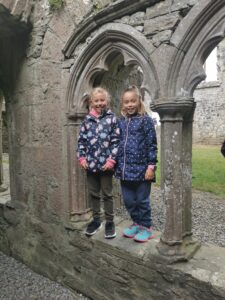
The story of Kylemore Abbey in county Galway is a truly remarkable one that spans over 150 year of tragedy, romance, innovation, education and spirituality. Built as a breath-taking Castle in 1868,it is now the Abbey and home of the Benedictine community of nuns. The Benedictine nuns arrived at Kylemore in 1920 after their Abbey in Ypres, Belgium was destroyed in the early months of World War I. Settling at Kylemore, the Benedictine Community opened a world-renowned boarding school for girls and began restoring the Abbey, Gothic Church and Victorian Walled Garden to their former glory. The Benedictine nuns invite visitors to discover the magic, beauty and peacefulness of Kylemore Abbey. Visit Kylemore Abbey and discover what makes it one of Irelands’ best-loved and most iconic attractions. Fantastic visit while out touring Connemara and take your time and enjoy…
Corcomroe Abbey is beautifully situated on the edge of the rocky hills and fertile valleys of the Burren, Co Clare. The church was constructed in the early 13th century. It was once known as “St. Mary of the Fertile Rock”, a reference to the Burren’s fertile soil. Although no sources refer to its foundation, it is probable that the monastery was founded by Domhnall Mór O’Brien in 1194 as part of his policy of patronage of the church and strengthening his rule in the region and The abbey appears in one of Irelands greatest writers W.B. Yeats’ play “The Dreaming of Bones”.
Fore Abbey is the ruin of a Benedictine Abbey, situated to the north of Lough Lene in County Westmeath, near Fore village. The abbey was founded by Saint Feichinin 630 CE and functioned for over 900 years. By 665 CE (the time of the yellow plague), the abbey is believed to have housed up to 300 Benedictine monks from Normandy and 2000 students. Architectural additions and damage by fire have altered the site’s appearance and layout over the centuries. It is a popular tourist site but also a popular local attraction due to the Abbey being also noted for what local populations call its seven wonders: the monastery built upon the bog, the mill without a race, the water that flows uphill, the tree that won’t burn, the water that doesn’t boil , the anchorite in a cell and the lintel stone raised by St Fechins prayers.
If you want to know more about these wonders you will just have to visit.
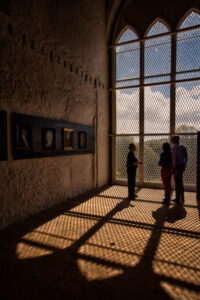
Tintern Abbey is located near New Ross in County Wexford, an evocative piece of Irish monastic history. The abbey takes its name from Tintern in Wales and was founded by the Earl of Pembroke founded Tintern Abbey in about 1200.
Legends say that when the Earl of Pembroke encountered a life-threatening storm during a sea voyage, he vowed to establish an abbey if he reached land safely. The abbey is often referred to as Tintern de Voto, or Tintern of the Vow as a result. It was inhabited by Cistercian monks from a larger abbey at Tintern, Wales, of which the Earl was also a patron. Today, visitors to the lovely County Wexford site can view the remains of the nave, chancel, tower, chapel and cloister. They can also participate in 45-minute guided tours of the property, which, in the 16th century, became living quarters for the Colclough family.
Join a local guide for a walk through the ruins of this 12th century Cistercian Abbey, the only Abbey in Ireland founded by a woman and the first example of Gothic architecture on the island. Starting at the Visitor Centre, hear the story of the Abbey through the ages including the 1798 rebellion and our shared past. As you walk around the Abbey itself, learn about the Cistercian way of life and their close ties to early medicine. Visit the reconstructed Physic Garden where over 40 herbs & plants the monks used to produce their cures/medicines still thrive.
The world is getting ready to travel again so why not let Katie Daly’s Ireland help plan your 2021 trip to Ireland and we can help get you to see some of these historic sites in person.

